
views
X
Trustworthy Source
PubMed Central
Journal archive from the U.S. National Institutes of Health
Go to source
The simple act of closing your eyes and focusing on your breath can do wonders for your body, but how do you even get started? Is it really possible to clear your mind of every thought? In this article, we’ll teach you how to meditate step-by-step so you can feel lighter.This article is based on an interview with our meditation coach, Masha Kouzmenko, co-founder of Silicon Valley Wellness. Check out the full interview here.
- Create a distraction-free space without phones or TVs and a comfortable place to sit.
- Set a timer for 5 to 10 minutes (or shorter), close your eyes, and focus on your breathing until the timer dings.
- Concentrate on your inhales and exhales if your mind wanders while meditating—it may even be helpful to count your breaths.
- Meditating can help you relax while lessening stress, relieving anxiety, and channeling your focus.[2]
Starting Your Practice
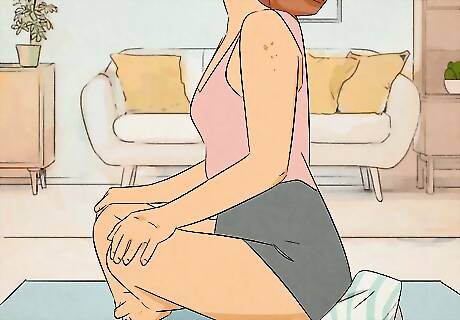
Sit up straight on your cushion or chair. An upright posture helps you focus on breathing as you inhale and exhale. If you’re sitting in a chair with a back, try not to lean back or slouch. Stay as straight as possible. Position your legs in whatever way is comfortable for you. Try extending them out in front of you or crisscrossing them.

Rest your hands in a comfortable position. Try not to worry about what your hands are doing; just let them rest naturally. Some people like to hold their hands in a mudra position (with the pointer finger and thumb pressed together) on their knees, while others prefer to keep them folded in their lap. Do whatever is most comfortable for you.

Tilt your chin downward and close your eyes. A slight tilt in your chin helps open your chest, and closing your eyes shuts out visual distractions. This is the ideal position for meditation, as it eases your breathing and helps you focus inward. As you continue to practice, you can learn to meditate with your eyes open.

Start your timer. Once you’re settled into a comfortable position, set your timer for however long you’d like to meditate. Start small with 3 to 5-minute sessions, and work up to 10, 20, or even 30-minute sessions.

Focus on your breathing. This is what meditation’s all about. Instead of trying not to think about things, give yourself something positive to focus on: your breath. Concentrate on your inhales and exhales, and let the worries of the outside world float away. Breathe through your nose, keeping your mouth closed, and avoid clenching your jaw or grinding your teeth. Try focusing on how your lungs expand and contract or how it feels when air passes through your nose.
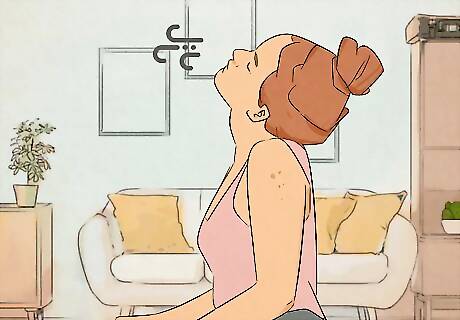
Observe your breath without analyzing it. The goal is to be present within each breath, not to describe or judge it. Instead of worrying about what you’re feeling, focus on the present moment. Concentrate on one breath at a time.
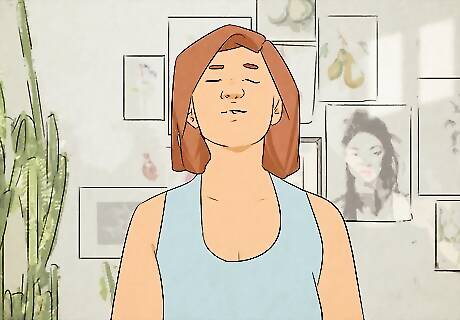
Bring your attention back to your breath if it wanders. If your mind starts to wander while you meditate, that’s okay! Rather than focusing on silencing your mind, let the thoughts come and go. Ignore outside world distractions, and return your focus to your breath. Notice when intrusive thoughts or distractions come through—is it during your inhales or exhales? Use this knowledge to revert your focus during specific moments of your practice. If you have a hard time refocusing, try counting your breaths.

Understand that meditating isn’t always easy. Meditation is a practice for a reason—it takes time to master! Try not to be too hard on yourself, especially when you’re first starting. You’ll build your meditating muscle with time. After all, being mindful is a lifelong goal. Aim to practice meditating for a few minutes every day. The more consistent your routines, the easier your sessions will become and the more benefits you’ll feel. Try downloading a meditation app like Headspace or Calm or following guided meditations online, as these can help you when you’re feeling unmotivated.
Meditation Prep & Tricks

Determine what you hope to gain with meditation. Meditation can help you do many things, like improve your creativity, help visualize a goal, quiet your inner voice, or make a spiritual connection. Your reason to meditate doesn’t have to be grandiose, but having a goal can help guide your practice. Perhaps you hope meditating will help you manage your anxiety and relax more. Maybe you want to feel more present in your body. Summarize your reason into a mantra to help propel you through your sessions. This could be something like, “I am happy” or “I am healthy.”

Make or find a distraction-free area to meditate in. Especially when you’re just starting out, it’s important to clear your environment of distractions. Turn off the TV, silence your phone, close windows and doors, and dim lights. The fewer things there are to distract you, the better. If you live with other people, ask them if they could be quiet or not come in the room for a short time while you meditate. Enhance your distraction-free space by lighting a soothing scented candle or incense. Put on instrumental music to help drown out outside noises and create a calming environment. Place an inspirational picture near your meditation space to help encourage you.
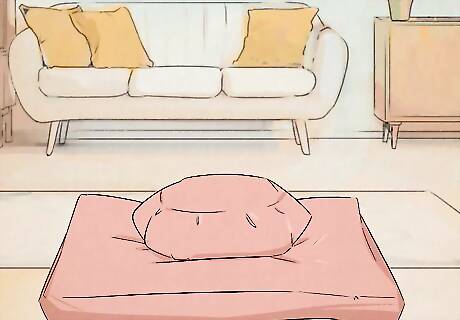
Set up a meditation cushion if you’d like. Also known as zafus, a meditation cushion can help you stay comfortable and grounded while meditating. Make your own zafus at home by setting an old pillow or sofa cushion on the ground. Use a pillow or cushion that’s large enough for you to sit cross-legged in. If sitting on the floor hurts your body, feel free to sit in a chair.
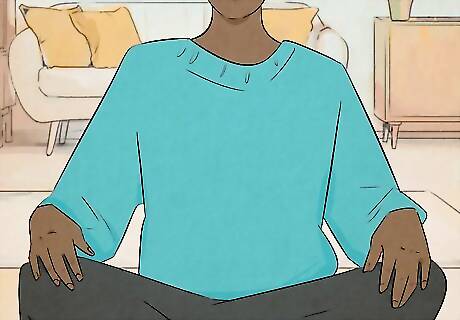
Put on comfortable clothes. The main purpose of meditating is to relax your mind, body, and spirit, and wearing something comfy is a great way to start. Try to avoid wearing constrictive clothing like jeans or tight pants, and opt for loose, breathable fabrics. Wear what you feel the most comfortable in, even if that means your pajamas. As you continue your meditation practice, it may become easier to meditate in all types of clothing in any location.

Choose a relaxing time to meditate. As a beginner, meditating during the busiest parts of your day may be difficult. Help ease your mind and avoid distractions by meditating at a time when you’re stress-free and relaxed. Perhaps this is first thing in the morning or right before bed. Remove all distractions before you start meditating. For instance, use the restroom, write that email, or eat a snack before sitting down. Meditating during stressful times may become easier with practice, so be patient with yourself and your journey.

Set up a timer. When you first start meditating, it’s always best to allot a certain amount of time for your exercise. This way, you won’t be distracted by how much time you have left or if you meditated long enough. Start by programming your timer for 3 to 5 minutes and then move up from there. Use a handheld kitchen timer, your phone, or an online timer.





















Comments
0 comment